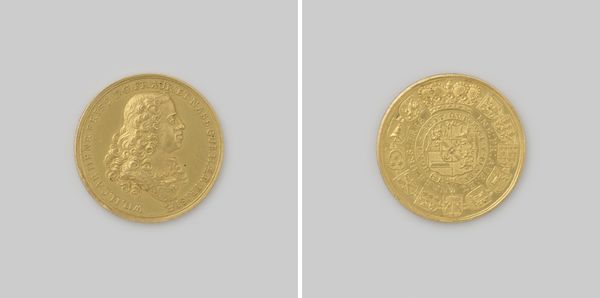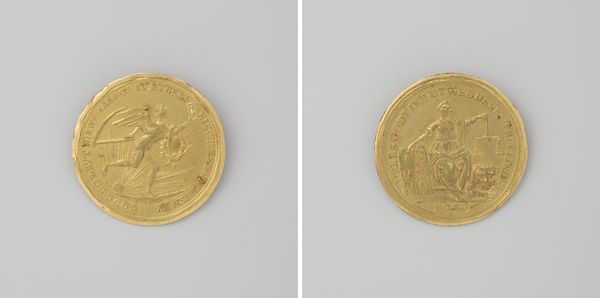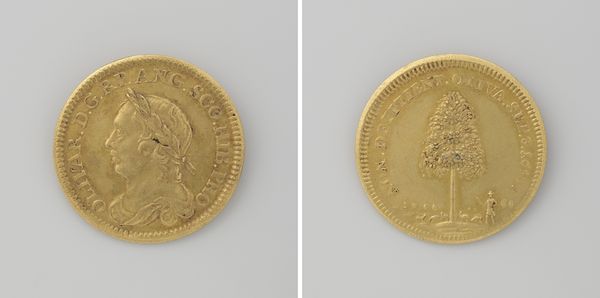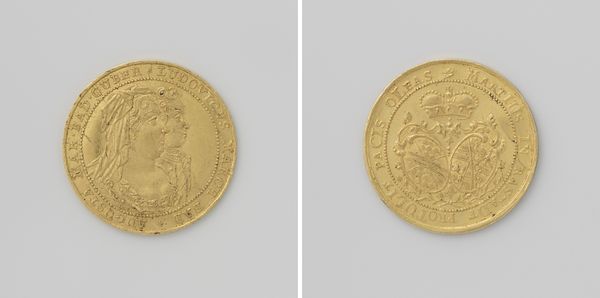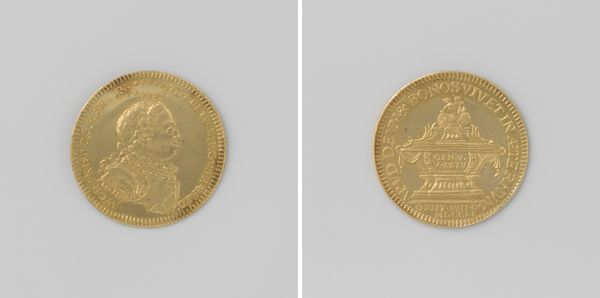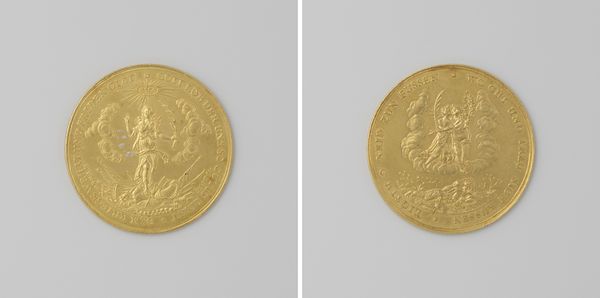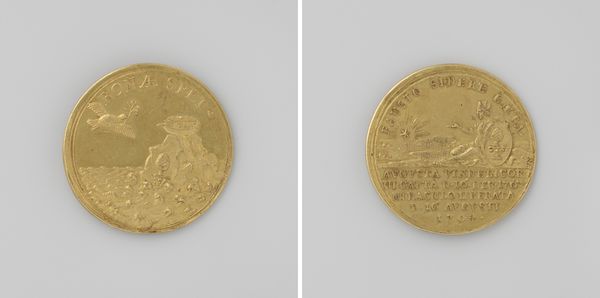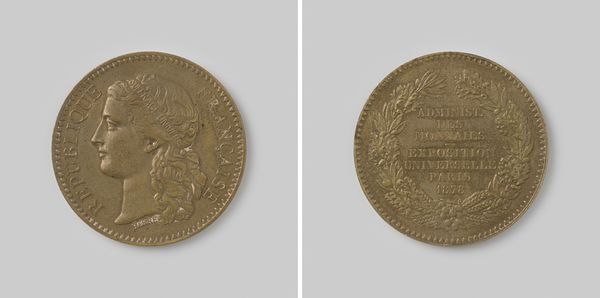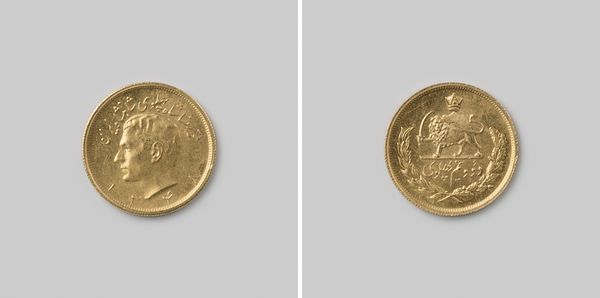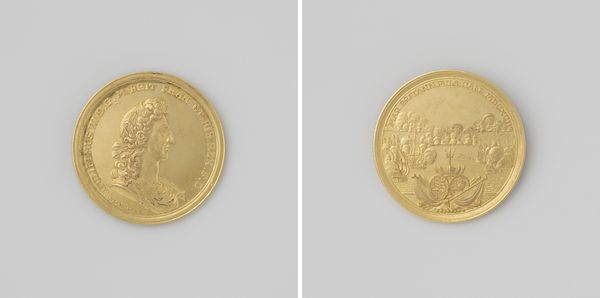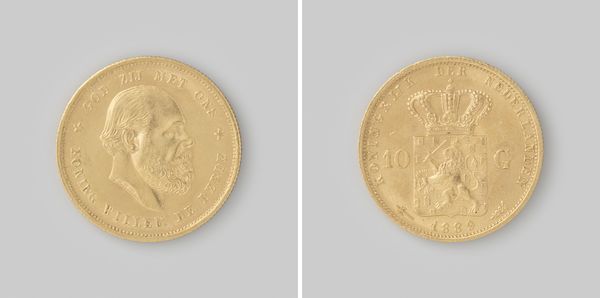
Landdagpenning van Friesland op naam van prinses Carolina van Nassau-Weilburg 1765 1765
0:00
0:00
johangeorgeholtzhey
Rijksmuseum
Dimensions: diameter 3.8 cm, weight gr
Copyright: Rijks Museum: Open Domain
This Landdagpenning was created in 1765 by Johan George Holtzhey, and is made of gold. The work’s material influence on its appearance is immediately apparent. As a substance, gold is valuable, heavy, and ductile, making it ideal for commemorative objects intended for elite audiences. Holtzhey would have used specialist metalworking tools to engrave the detailed portrait of Princess Carolina and the elaborate heraldic shield on either side. These techniques are rooted in traditions of goldsmithing and jewelry making, requiring a high level of skill and craftsmanship. This process imbues the coin with social significance, reflecting the power and wealth associated with the ruling classes. The very act of minting coins and medals was often tied to wider social issues of labor, politics, and consumption, asserting control over economic systems. Despite its small size, the Landdagpenning demonstrates the immense amount of work involved in the production process. Paying attention to materials, making, and context helps us understand the full meaning of an artwork, challenging the traditional distinction between fine art and craft.
Comments
No comments
Be the first to comment and join the conversation on the ultimate creative platform.

